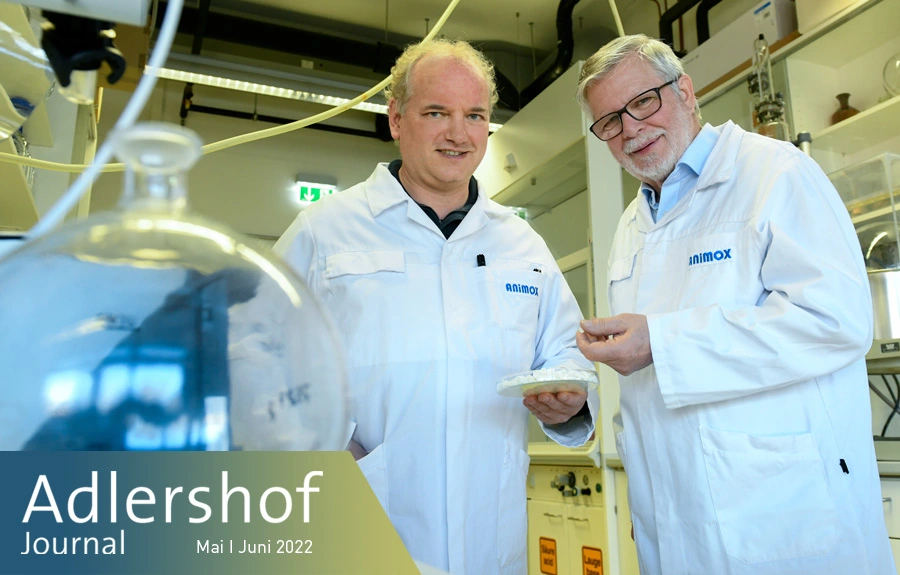Bioplastics from slaughterhouse waste and plant remains
In the process developed by ANiMOX GmbH, the bacterium Cupriavidus necator helps to obtain raw materials for fully degradable plastics
Axel Höhling, managing partner of ANiMOX, remembers exactly when he had the idea to start his company. It was in late November 2000, just before his birthday, when the first cows in Germany were dropping dead due to sponge-like changes in their brains – commonly known as mad cow disease, or BSE. From then on, feeding animals with animal meal was made illegal. “But that stuff is a valuable resource, I thought, we have to make something out of it,” Höhling decided.
In his job at the time, he was involved in the repurposing of such animal meals. “I am actually an economist,” says Höhling. “Which is why I found myself a biotechnologist in Adlershof and brought her together with a high-pressure technician. We all sat together and mulled over what we could do.” It was clear that, for it to be used for a different purpose, proteins, fat, and minerals had to be extracted from the meal in the purest form possible. Proteins as such are not soluble in water. But it could be made possible using high pressure.
Höhling and his team got 1.4 million euros in funding from the State of Berlin. After a year and a half of research, they were sure: it works. The animal remains were ground and pressurised at over 100 degrees Celsius in a high-pressure experimental reactor. And, indeed, they were able to gather aqueous protein hydrolysates, high-purity fat fractions, and calcium phosphate from animal-based waste products. This was what they needed to found ANiMOX GmbH in 2003.
In the beginning, the company was developing a binder for use in the engineered wood industry. It was able to capture the formaldehyde in the adhesive and reduce harmful emissions by a factor of 10. It was supposed to be a huge breakthrough.
But then, the 2007 housing crisis in the US brought the production of particle board in Germany to a standstill. When the market had recovered, other binders had become more sought-after. Phenolic resins, held together by formaldehyde, were hardly used any more.
Since 2012, ANiMOX has been focusing on bioplastics production together with Technische Universität Berlin and Leibniz Institute for Agricultural Engineering and Bioeconomy (ATB) Potsdam. The project tests materials gained from animal raw materials, especially from fats, and has researchers working together from Boston to Malaysia.
These fats are used to feed the “Cupriavidus necator” bacteria. By withholding the phosphorus needed for its survival, the bacteria eats everything it can get its hands on until up to 90% of its cells consist of bioplastics. These are later extracted, cleaned, and processed.
Whether it’s used in plates, bags, straws, or covers – the plastics are fully degradable and disappears in just a few weeks without leaving a trace, even in cold water conditions in the sea. A solution to the huge garbage whirlpools in the oceans. The material can also be used for packaging, as a coating for Tetra paks, in self-dissolving sutures in medicine, or as a material for connecting bones. Further, it can be used for fertiliser encapsulation or as mulch covering in agriculture, which can be left on the field where they break down immediately and go into the soil.
After six years of research, the company can now gather proteins from plant remains, including from rapeseed. Industry partners are increasingly interested in bio-based components. From research in the lab to sample production, the biotechnologists and chemists at ANiMOX can provide the industry with suitable raw materials.
Because of this, ANiMOX products can now be found in binders, detergents, coatings, and bio-surfactants as well as in the food, feed, and pharmaceutical industry. Thomas Grimm, operations director of ANiMOX: “Our goal is to process any type of biological waste into recyclable raw materials. In the long run, the bioeconomy must become inexpensive.”
Kathrin Reisinger for Adlershof Journal
